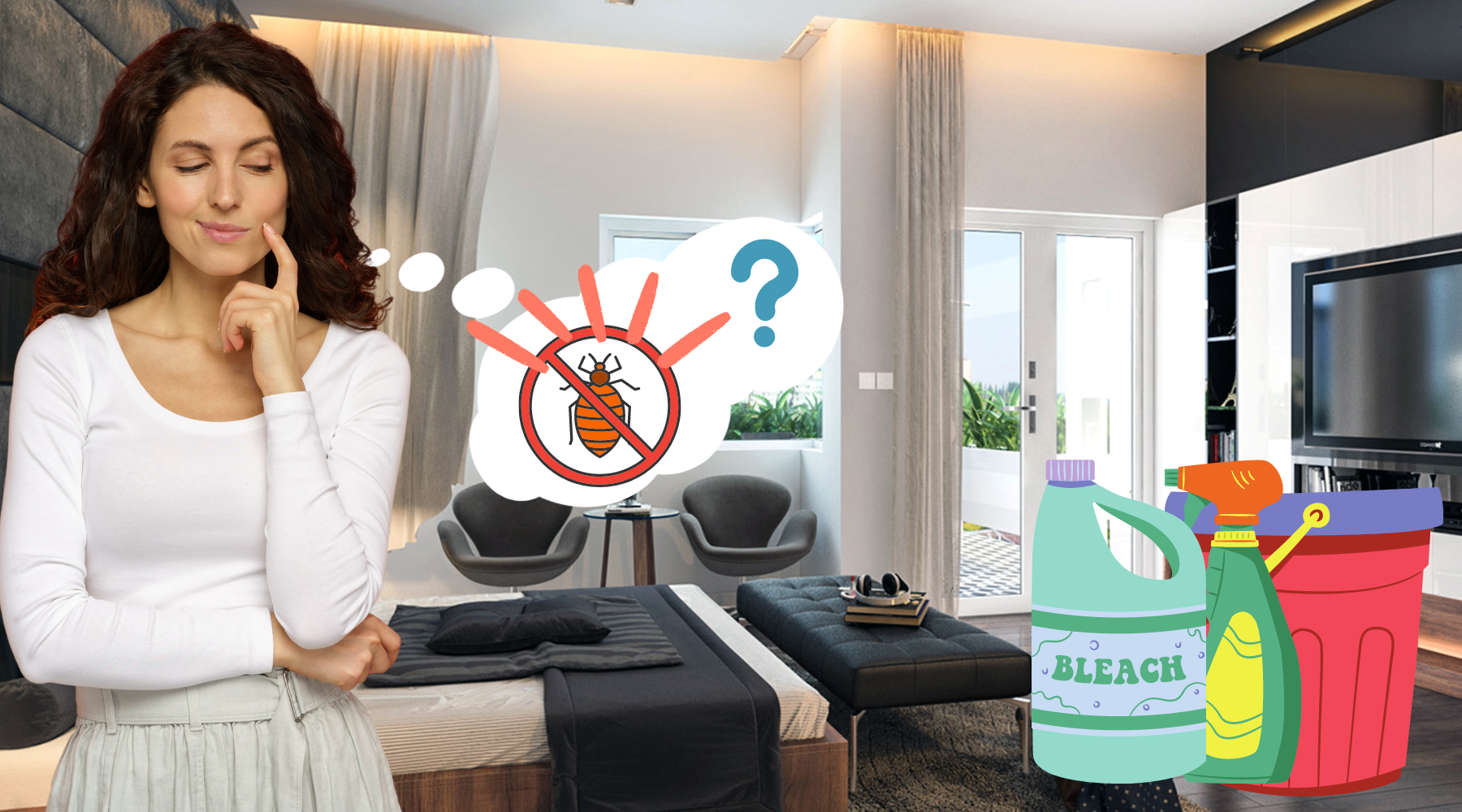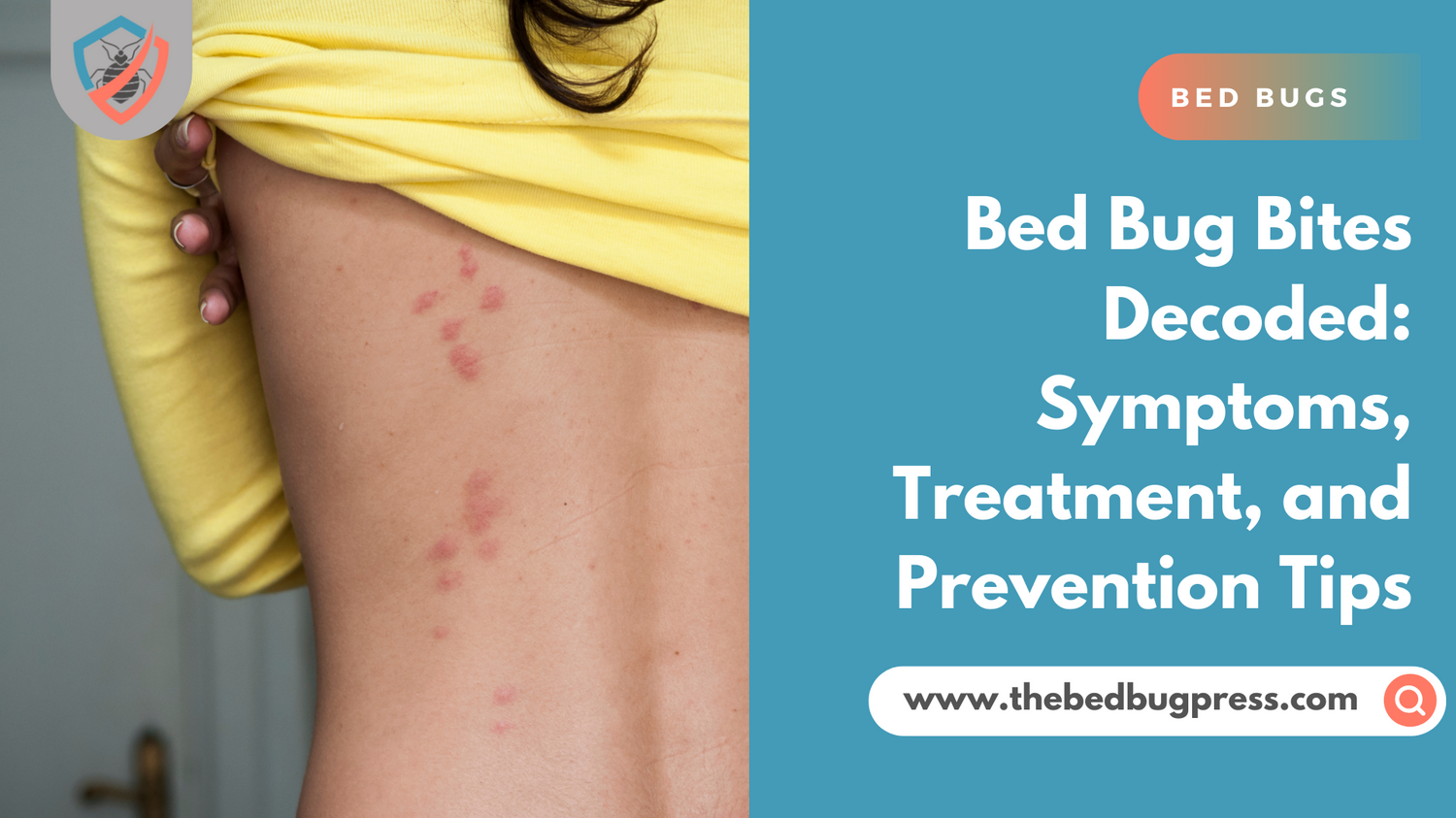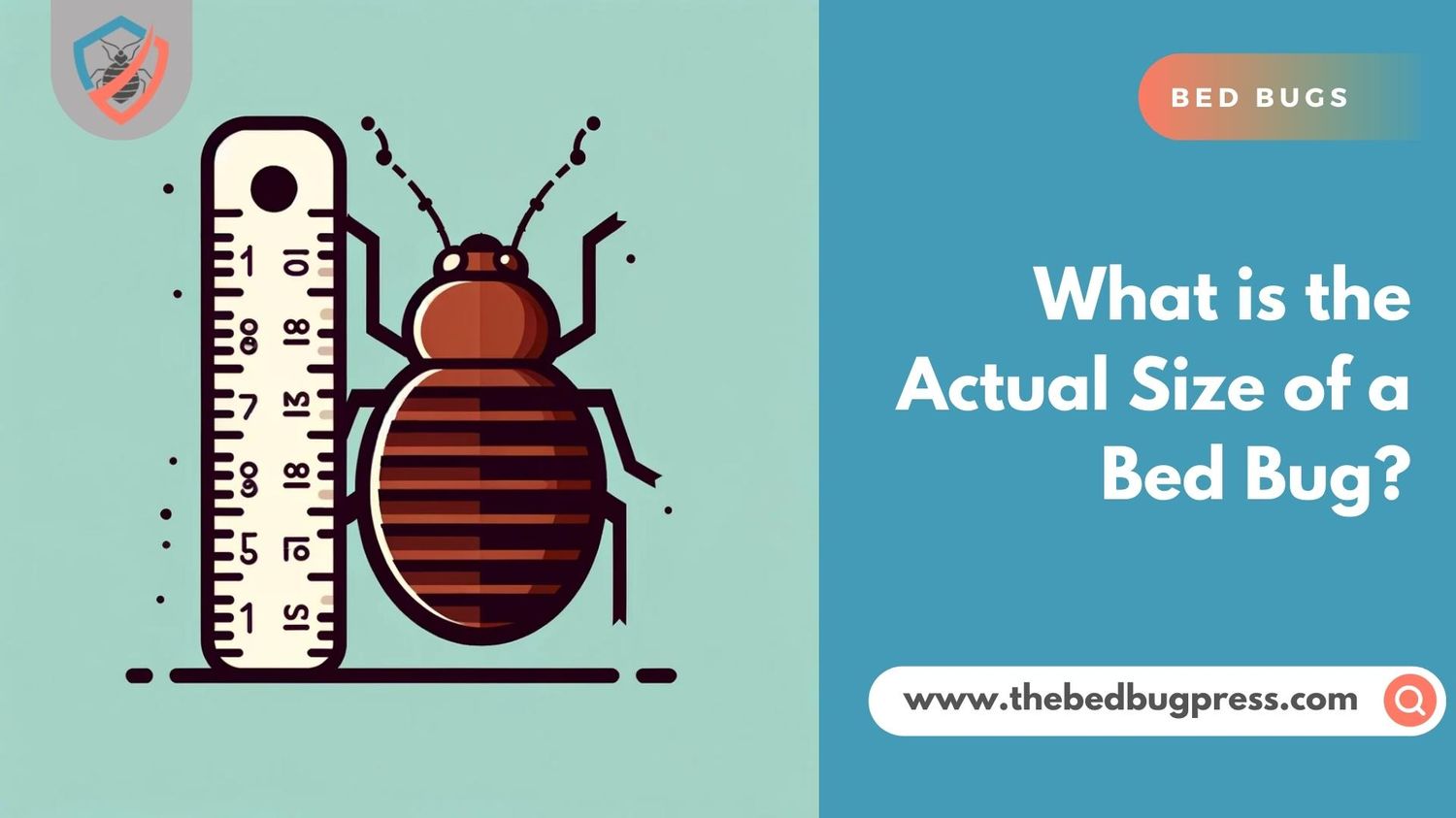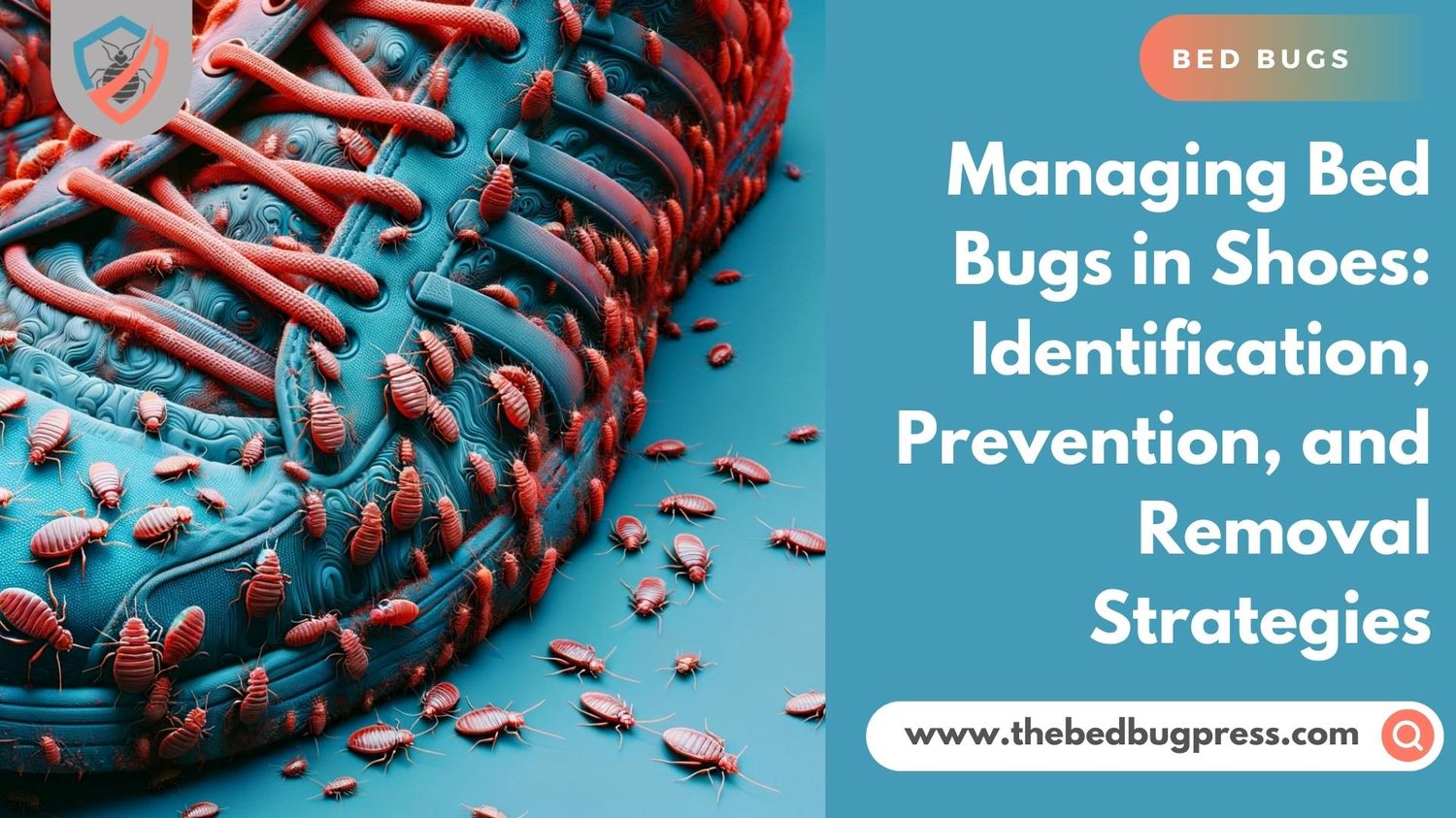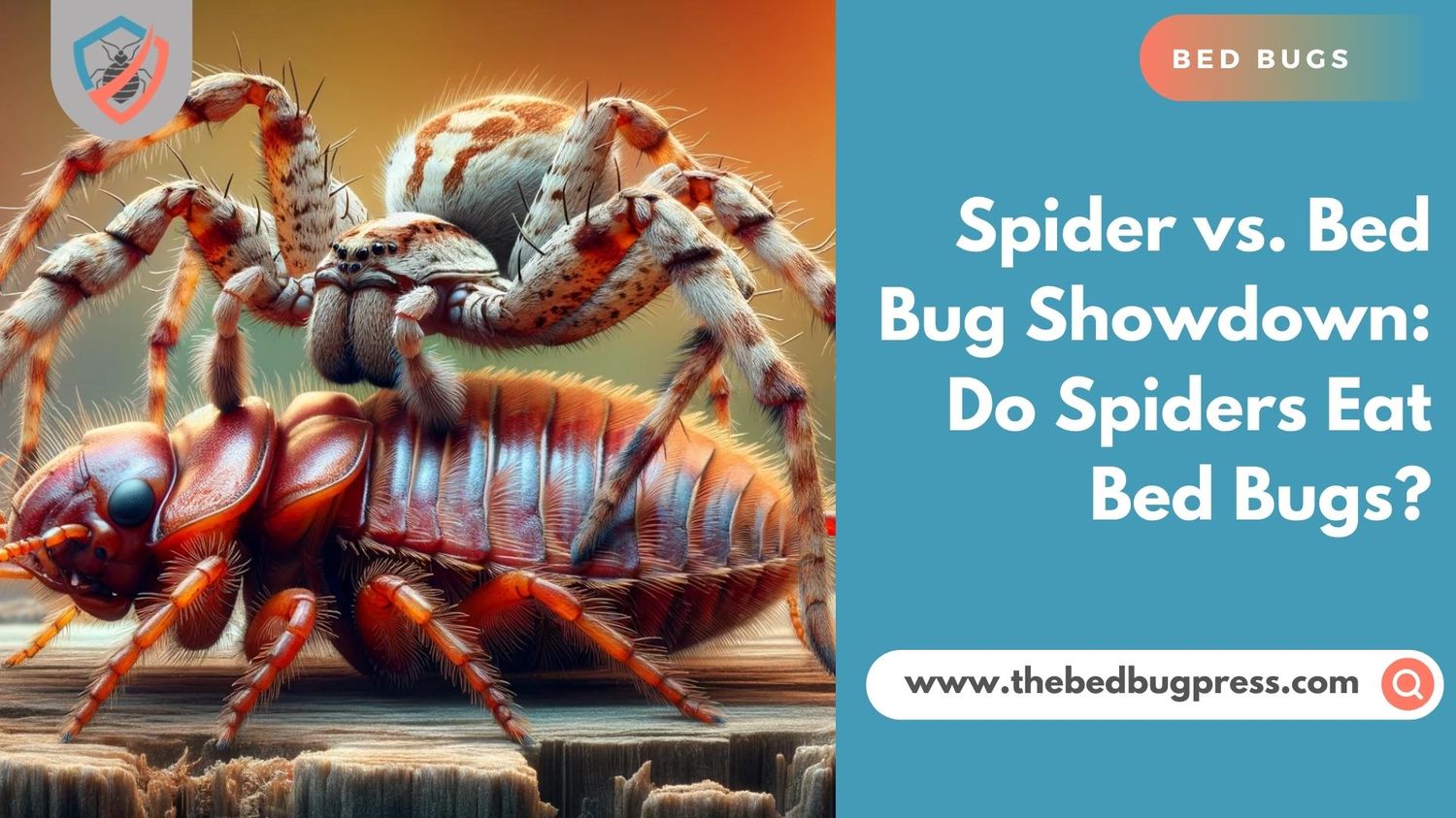In the eternal battle against bed bugs, desperate times call for drastic measures. As these persistent pests invade our sanctuaries of sleep, leaving us desperate for a solution to get rid of bed bugs, one household item stands out among the rest: bleach. Its powerful disinfecting properties have earned it a reputation for vanquishing germs and stains, but can it also conquer the resilient bed bug?
Let’s explore the effectiveness of how bleach kills bed bugs and as a potential weapon in the war against these notorious bloodsuckers, uncovering the truth and shedding light on the best practices for using bleach to combat bed bugs.
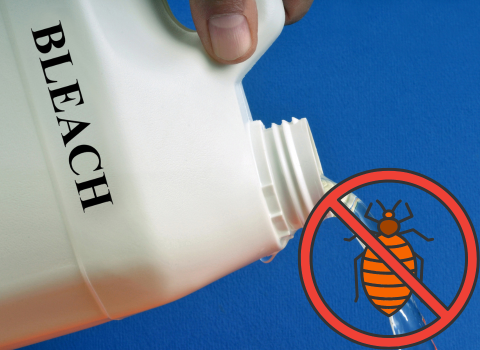
Bed Bug Annihilation: Will Bleach Kill Bed Bugs and Their Eggs?
When it comes to using bleach as a bed bug-killing agent, it’s important to understand its limitations and potential effectiveness. Bleach, with its strong oxidizing properties, can kill a wide range of pathogens and bacteria. However, its efficacy against bed bugs and their eggs is somewhat questionable.
While bleach can kill bed bugs on contact, it may not be as effective when it comes to eradicating their eggs. Bed bug eggs have a protective outer layer that shields them from many chemicals, including bleach. This means that even if bleach manages to kill adult bed bugs, it may not necessarily eliminate the entire infestation.
Furthermore, bed bugs are notorious for their ability to hide in cracks, crevices, and other hard-to-reach areas. Bleach, being a liquid, may not penetrate these hiding spots effectively, giving all the bed bugs a chance to survive and reproduce.
If you do choose to use bleach as a part of your bed bug treatment plan, it’s important to exercise caution. Bleach is a strong chemical that can be harmful if not used properly. It can cause skin and respiratory irritation, and it should never be sprayed directly on mattresses, bedding, or other areas where it may come into direct contact with your skin.
Battling Bed Bugs: Will Bleach Water Kill Bed Bugs?
In the ongoing battle against bed bugs, many individuals wonder if bleach water can be a potent weapon in their fight. Bleach, known for its strong disinfecting properties, seems like a logical choice to combat these resilient pests. However, when it comes to using bleach water to effectively kill bed bugs though, it’s essential to understand its limitations and potential effectiveness.
Bleach water, which is a mixture of bleach and water, can indeed kill bed bugs on contact. The high alkaline content and oxidative properties of bleach can be detrimental to the insects and suffocate bed bugs’ outer shells, leading to their demise. However, it is important to note that bleach water might not reach all hiding places where bed bugs reside, such as cracks, crevices, and deep within furniture or mattresses. Bed bugs are known to be adept at hiding and can survive even when exposed to certain chemicals.
Another important consideration is that bleach water is primarily effective on surfaces and objects. Using it directly on mattresses, bedding, or other items that come into contact with human skin is not recommended due to the potential harm it can cause.
It’s crucial to approach the battle against bed bugs with a comprehensive strategy that combines various methods. While bleach water can be used as a part of a broader approach, such as cleaning and disinfecting surfaces, it should not be solely relied upon as the sole solution for eliminating bed bugs.
To effectively combat bed bugs, it is advisable to consult professional pest control services. They possess the expertise and knowledge to assess the severity of the infestation and implement a targeted treatment plan using a combination of methods, including insecticides specifically designed for bed bug eradication.
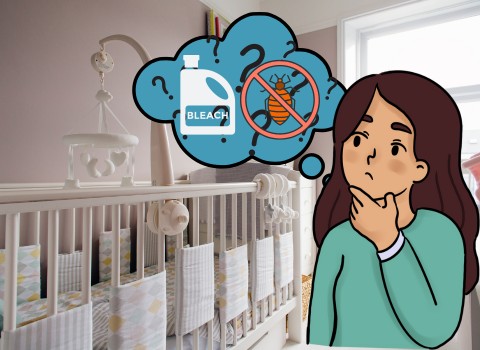
How to Eradicate Bed Bugs in the Washer with Bleach
To eradicate bed bugs in the washer using bleach, follow these steps:
Step 1: Sort and bag infested items
Separate infested items, such as clothing, bedding, and curtains, from non-infested items.
Place the infested items in sealed plastic bags to prevent bed bugs from spreading.
Step 2: Pre-treat the items.
Before washing, pre-treat the infested items by spraying a diluted bleach solution directly on them.
Ensure proper ventilation and wear protective gear, including gloves and a mask, when handling bleach.
Step 3: Load the washer.
Empty the contents of the sealed bags directly into the washing machine.
Make sure not to overload the washer, as the items need enough room to move around and get thoroughly cleaned.
Step 4: Add bleach to the wash cycle.
Add bleach to the designated bleach dispenser or directly into the washer drum, following the manufacturer’s instructions.
Use a bleach product specifically designed for laundry use, such as chlorine bleach or oxygen bleach.
Step 5: Set the washer cycle.
Choose the highest water temperature setting that is safe for the fabrics being washed.
Select a long wash cycle to ensure thorough cleaning.
Step 6: Run the washer cycle.
Start the washer and allow it to complete the full cycle, including the wash, rinse, and spin cycles.
The combination of hot water and bleach will help kill the bed bugs and their eggs.
Step 7: Dry the items.
After washing, promptly transfer the items to a dryer set on the highest heat setting that is safe for the fabrics.
Run the dryer for at least 30 minutes to ensure that any surviving bed bugs or eggs are killed.
Step 8: Inspect and store the items.
Once dry, inspect the items for any signs of remaining bed bugs or eggs.
Store the cleaned and inspected items in sealed bags or containers to prevent re-infestation.
Remember, using bleach in the washer is just one step in a comprehensive approach to bed bug extermination. It’s important to address the infestation in other areas of your living space and consider seeking professional assistance if needed.
Bug Repellent or Myth? Debunking Bed Bug Repulsion with Bleach
When it comes to repelling bed bugs, bleach is often regarded as a potential solution. However, it’s important to debunk the myth and understand that bleach is not an effective bug repellent against these resilient pests. While bleach is known for its disinfecting properties, its repelling capabilities against bed bugs are questionable.
Firstly, bed bugs are primarily attracted to the carbon dioxide and body heat emitted by humans, rather than being deterred by certain scents or chemicals. Bleach does not emit any repellent properties that would discourage bed bugs from seeking out a human host. Its strong odor may temporarily repel bed bugs, but it does not offer long-term or reliable protection against infestations.
Furthermore, bleach is not designed or formulated to repel or deter insects. Its primary function is to disinfect surfaces and kill bacteria and germs. While bleach may have some temporary effects on bed bugs upon direct contact, it is unlikely to prevent them from infesting an area or protect against re-infestation.
It’s important to focus on comprehensive approaches for dealing with bed bug infestations, such as thorough cleaning, vacuuming, heat treatments, and professional pest control services. These methods target the elimination of existing bed bugs and their eggs, as well as preventing future infestations through proper sanitation and maintenance practices.
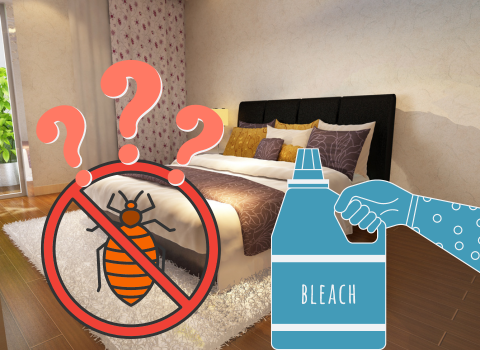
Bleach Blitz: Will Cleaning with Bleach Kill Bed Bugs?
When facing a bed bug infestation, people often turn to bleach as a potential solution. Known for its powerful cleaning properties, bleach may seem like a logical choice for eliminating these unwelcome pests. However, it’s important to understand that while bleach can kill bed bugs on contact, its effectiveness in completely eradicating an infestation is limited.
When cleaning with bleach, it can certainly kill bed bugs that come into direct contact with the solution. Its strong oxidizing properties can damage the insects’ exoskeletons and lead to their demise. However, bed bugs are known for their ability to hide in cracks, crevices, and hard-to-reach areas, making it difficult for bleach to reach and eliminate all of them.
Additionally, bed bugs reproduce rapidly, and their eggs are highly resilient to chemical treatments. Bleach may not be effective in killing bed bug eggs, which can hatch and lead to a renewed infestation. Therefore, cleaning with bleach alone may not be sufficient for complete eradication.
To address a bed bug infestation effectively, it is crucial to implement a comprehensive approach. This includes thorough cleaning, vacuuming, steam treatments, and the use of targeted insecticides specifically designed for bed bug eradication. It’s also advisable to consult with professional pest control services, as they have the expertise and experience to tackle bed bug infestations effectively.
Chlorine Crusade: Unmasking the Effects of Chlorine on Bed Bugs
Chlorine, a potent disinfectant, may have the ability to kill bed bugs upon direct contact due to its oxidizing properties. However, as a sole solution for bed bug control, its effectiveness is limited.
Bed bugs are notorious for their ability to hide in small crevices and hard-to-reach areas, making it challenging for chlorine to penetrate and eliminate all of them. Relying solely on chlorine may lead to incomplete eradication and the potential for re-infestation.
Moreover, it’s important to consider safety precautions when using chlorine. This chemical can be harmful to humans and pets if not used properly. Direct contact with chlorine can cause skin and eye irritation, respiratory issues, and other health concerns.
Therefore, a comprehensive approach to bed bug control that combines various methods, such as thorough cleaning, vacuuming, steam treatments, heat treatments, and targeted insecticides, is recommended. Seeking professional assistance from pest control services can provide expertise and guidance in developing an effective bed bug control plan.

Step-by-Step Guide to Utilizing Bleach to Kill Bed Bugs
Bed bugs can be a nuisance and a potential health hazard for homeowners and renters alike. While there are many solutions for eliminating bed bugs, utilizing bleach is one possible option.
Here is a step-by-step guide to utilizing bleach as a bed bug killer:
Step 1: Prepare the area.
Clear the room of all clutter and unnecessary items.
Vacuum and dust the area to remove any loose bed bugs, eggs, and debris.
Step 2: Dilute bleach
Fill a spray bottle with a mixture of one-part bleach to three parts water.
Wear gloves, goggles, and a mask to protect yourself from bleach fumes.
Step 3: Targeted application
Identify areas where bed bugs are present, such as cracks, crevices, and furniture.
Spray the diluted bleach solution directly on bed bugs and their eggs.
Avoid spraying bleach on items that will come in contact with skin, such as mattresses and bedding.
Step 4: Allow time to dry.
Allow the bleach solution to dry for at least 30 minutes before returning items to the room.
Open windows and use fans to promote ventilation.
Step 5: Repeat as necessary.
Monitor the area for any signs of bed bug activity.
Repeat the process as necessary until all bed bugs are eliminated.
It’s important to remember that bleach is not a standalone solution for bed bug extermination. To maximize effectiveness, combine bleach with other bed bug treatments, such as vacuuming, steaming, and professional pest control services. With careful preparation, targeted application, and a comprehensive approach, you can utilize bleach to eliminate bed bugs and reclaim your home.

